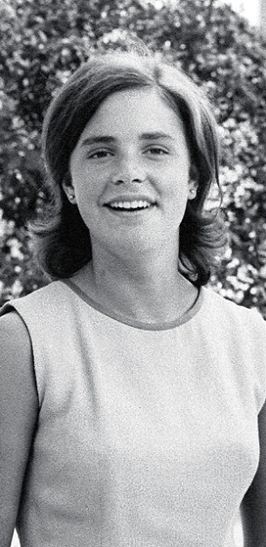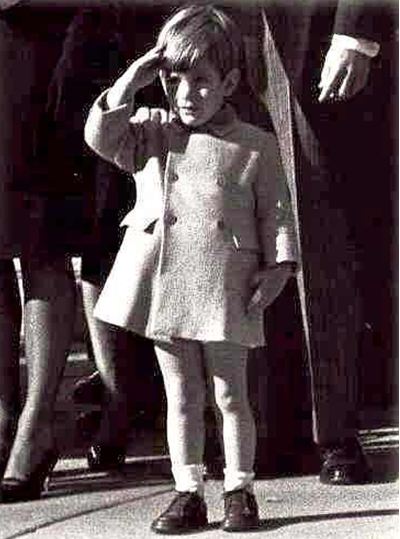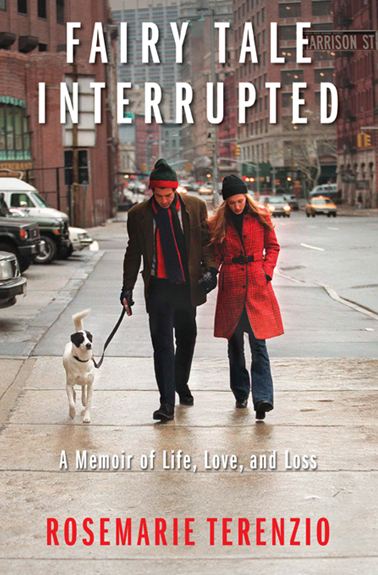Sins of the Father
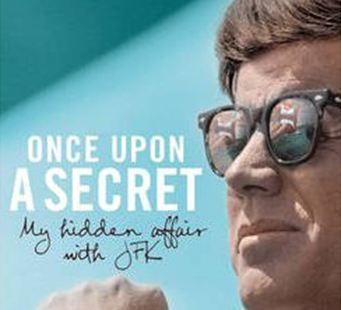
On March 3, 2012 the New York Times published the obituary of news photographer Stan Stearns, who had died the day before at the age of 76. Stearns had taken the photograph of the 3-yr-old John F. Kennedy, Jr., in shorts and coat, saluting his slain father, President John F. Kennedy, as he passed by in a coffin mounted on a caisson and followed by a black, rider-less horse, on November 25, 1963. This photograph is Stearns' only widely known photograph. It was, however, enough to earn him immortality. That photograph of young John Kennedy went, as we would now say, viral. It became one of the most recognizable photographs in American history. Indeed, the Times used it as the main image for Stearns' obituary. The only thing that was missing from the obituary was a comment from the boy himself. For John, that most photogenic of subjects, is no longer with us. By James Mahon, Yale University.
The late Christopher Hitchens, in a review of Ed Klein's The Kennedy Curse in 2003, wrote that the events of 9/11 have replaced the Kennedy assassination as the nation's common memory (where were you when the Twin Towers were attacked?). Hitchens said that the "Kennedy cult" is "already meaningless to younger Americans." Whatever about American teenagers and college kids (to whom just about everything is meaningless), the Kennedy cult is certainly not meaningless to American twenty- and thirtysomethings. It is a multi-million dollar industry. In addition to last year's Emmy-award-winning but controversial mini-series The Kennedys (2011) (nicknamed "Shamalot"), the past twelve months alone have seen the publication of at least ten new books about the Kennedys: JFK In Ireland: Four Days that Changed a President (2011), by Ryan Tubridy; The Kennedys: All the Gossip Unfit for Print (2011) by Darwin Porter and Danforth Prince; Last Word: My Indictment of the CIA in the Murder of JFK (2011), by Mark Lane; The Girl on the Stairs: My Search for a Missing Witness to the Assassination of John F. Kennedy (2011), by Barry Ernest; LBJ: The Mastermind of the JFK Assassination (2011), by Phillip F. Nelson; LBJ and the Conspiracy to Kill Kennedy: A Coalescence of Interests (2011), by Joseph P. Farrell; Come to the Edge: A Memoir (2011), by Christiana Haag (John's ex-girlfriend); Jack Kennedy: Elusive Hero (2011), by Chris Matthews; Fairy Tale Interrupted: A Memoir of Life, Love, and Loss (2012), by RoseMarie Terenzio (John's former secretary); and Once Upon a Secret: My Affair with President John F. Kennedy and its Aftermath (2012) by Mimi Alford (former White House intern).
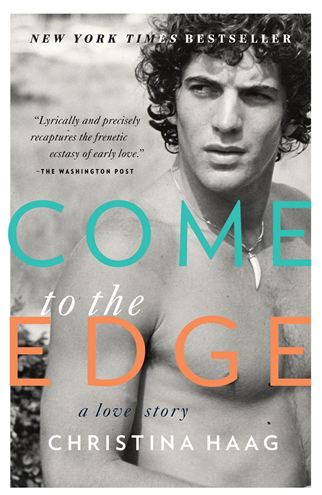
While the assassination of President Kennedy and the Kennedy presidency continue to be the most popular topics in the Kennedy cult, President Kennedy's sex life is probably next in notoriety (see the documentary JFK's Women – The Scandals Revealed (2007), about his (possibly spy) mistresses Mariella Novotny, Ellen Rometsch, and Suzy Chang, as well as Porter and Prince's collection of Kennedy gossip). It's a toss-up between this and his use of drugs, especially speed, for various important events, including the televised presidential debates with Nixon. The speed – amphetamines – he was given by Dr. Max Jacobson ("Dr. Feelgood") in injections to combat his back pain. Pretty much, JFK was ailing and in pain every day of his life, and was on an incredible daily cocktail of drugs, in addition to wearing a back brace. Sadly, he was wearing the back brace on the day he was shot, and it kept him sitting upright for the second bullet.
However, for the generations of Americans who grew up in the 80s and 90s looking at checkout counter magazine racks, the life and tragic death of the "American Prince" of John F. Kennedy, Jr. – who preferred to be known as John Kennedy, and who was never actually called "John-John" by his family – is almost as interesting as that of the father. In addition to an assortment of books by former girlfriends, former friends, and assorted hangers-on, there has already been an A&E TV biography, John F. Kennedy, Jr. 1960-1999(1999), and a History Channel documentary John F. Kennedy, Jr.: Child of Dream (1999), and one (pretty terrible) TV movie, America's Prince: The John F. Kennedy, Jnr. Story (2003).
In the case of the young Kennedy the interest is in his marriage rather than his sex life. People love to read about the American royal couple, John and Carolyn Bessette-Kennedy. Had they only lived and had beautiful children, instead of dying together in their plane crash in their 30s, the country believes, the lives of everyone would have been better. And the prospect of John running for the Presidency, always a possibility and given a new lease of life by his incredibly well received speech at the Democratic convention in Atlanta in 1988, would send news outlets into raptures.
With John's death at the age of 38, the chance for a revival of the political fortunes of the Kennedy family was lost, perhaps irretrievably ("The Fall of the House of Kennedy," according to sensationalist biographer Edward Klein). What is curious about John being the Kennedys' best hope for political redemption is that, in a plot twist reminiscent of The Godfather, John was in many ways a civilian, and not part of what he called "the family business" (unconsciously mimicking Michael Corleone). He never ran for any office. Indeed, in many respects, he was the un-Kennedy. And that is why people liked him.
Here it is worthwhile comparing the most recent memoirs by Christina Haag and RoseMarie Terenzio with those of Mimi Alford (pictured right), the 19-yr-old student who had the sexual relationship with 45-yr-old President Kennedy, as documented in her Once Upon a Secret. The stories of JFK's many, many sexual affairs are legion. Even so, this story beggars belief. At its heart is the question of whether the President was guilty of rape. He was certainly guilty of procurement.
The tale is as follows. In 1961, when she was just 18 years old and in her final year of boarding school at Miss Porter's, in Farmington, Connecticut (the same boarding school that Jackie Kennedy attended), Marion "Mimi" Beardsley, as she was known then, was the editor of the school newspaper, Salmagundy. She flew to Washington, D.C., to interview Letitia Baldrige, Jackie's social secretary and another alumna (or "Ancient") of Miss Porter's. Mimi had wanted to interview Jackie, but had to settle for an interview with Letitia, or "Tish". On the day, Mimi was shown around by Priscilla "Fiddle" Wear, another Miss Porter's alumna who was an assistant to JFK's personal secretary. Fiddle was a college friend of Jill "Faddle" Cowan, who worked in the press office at the White House. While waiting in the Rose Garden with a group of children, Mimi shook hands with the President, who asked her what school she was at, and where she planned to go to college. She wrote an article about the visit for the Salmagundy, and that seemed to be that.
Next year, out of blue, after having finished her first year at Wheaton College, she was offered a summer internship at the White House, in the press office. She thought it was Tish who had pulled a string. The 5-feet 9-inch brunette, athletic but skinny, arrived on the train and started work immediately. On her fourth day, she was invited to go swimming in the White House pool by Dave Powers. Powers was a Bostonian and the President's Special Assistant (Powers was in the car behind Kennedy's at Dallas), a charmer Newsweek referred to as an "irrepressible leprechaun." In the pool's changing room she was joined by Fiddle and Faddle. The three women went into the pool, and then Kennedy appeared at the edge of the pool: "Mind if I join you?" Later that afternoon, she was invited to a get-together "upstairs," again by Powers. The irrepressible leprechaun brought her up on the elevator to the family residence, where Fiddle and Faddle were already seated, along with Kenny O'Donnell, the Appointments Secretary. Powers served everyone daiquiris. She learned that Jackie and the two children were away. Then the President arrived. He soon asked her, "Would you like a tour of the residence, Mimi?" He brought her into Jackie's bedroom, moved closer and closer to her, guided her toward the edge of the bed, and started unbuttoning her clothes. She was a virgin. After sex, he showed her the bathroom, and then told her that there was a kitchen if she needed to eat.
Almost fifty years later, in response to friends telling her "You were set up! He was a predator!," and that the President was guilty of rape, Mimi says that "I don't see it that way" and "I wouldn't call it nonconsensual." However, she accepts that everyone except her knew that day what was going to happen, and she also says that "When we were in the bedroom, he had maneuvered me so swiftly and unexpectedly, and with such authority and strength, that short of screaming, I doubt that I could have done anything to thwart his intentions." The following week, Powers rang her again: "Would you like to come for a lunchtime swim?" She did, and the affair began. It lasted until Kennedy was assassinated. She kept it a secret from everyone, including her fiancé, Tony, whom she met while still sleeping with the President, although told him before they got married (Tony never got over the betrayal, and they later divorced). She deleted the internship from her résumé, and, with her married name, tried to keep it quiet. Not until 2003, with the publication of Robert Dallek's An Unfinished Life: John F. Kennedy 1917-1963, which talked about the President's sexual affairs with Fiddle, Faddle, Pamela Turnure (Jackie's Press Secretary), Mary Pinchot Meyer (a friend of Robert Kennedy), Judith Campbell Exner (a socialite from LA), as well as Mimi, did she finally acknowledge it.fa
Kennedy fils was most definitely not the sexual predator that Kennedy père so clearly was (and Kennedy grand-père, of course). From all the accounts of his friends and former girlfriends, John Kennedy was a respectful, serial monogamist. True, he had relationships with, or went on dates with, models and actresses, including Ashley Richardson, Brooke Shields, Sarah Jessica Parker, Madonna, Daryl Hannah, and Cindy Crawford (who said that dating him was like dating "the sun"). However, his relationships tended to be with women who were his friends from high school or college (Jennifer Christian, Sally Munro, and Christina Haag). He certainly seemed more concerned with finding a wife – and not for the purposes of a political career, like his father – and having a son (to be called Flynn) than with being a playboy, despite being voted the "Sexiest Man Alive" by People magazine in 1988 in its best-selling "Sexiest" issue ever (it's true he worked out every day – good for him). Indeed, one of his most important acts was to write an article for the September 1997 issue of George, the political magazine he edited, attacking his cousins Michael (who had an affair an underage babysitter) and John P. Kennedy II (who tried to get his earlier marriage annulled) as "poster boys for bad behavior." This was a few years after his other cousin, William Kennedy Smith, had gone on trial for rape at the Kennedy estate in Palm Beach (he was acquitted).
Breaking publicly with the family in this way was unheard of for a Kennedy, and it revealed something important. John was his mother's son, and not his father's son. This was true genetically, in the sense that he had the looks of a Bouvier (especially Jackie's father, John "Black Jack" Vernou Bouvier III) rather than a Kennedy (like his sister Caroline), and in terms of character. Jackie had raised her two children away from the Kennedy clan, in the more cosmopolitan environment of New York. John and Caroline avoided the drugs and drinking, and by all accounts were not arrogant, spoiled kids. Indeed, John, clearly his mother's favorite, was a mamma's boy (another difference between him and his father, whose mother Rose had been cold and distant). He did what Jackie told him to do, from saluting his dead father (Jackie prompted him) to abandoning his ambition to go to the Yale School of Drama (Jackie didn't want him to be an actor, thinking it not a serious profession) and attending NYU law school in order to become an assistant district attorney in Manhattan. He didn't get a pilot's license until after she died, because she forbade him to do so. He stopped rooming with Rob Littell after Brown University because she decided to split up the boys. Indeed, she may have been the reason his various relationships with didn't work out – she disapproved of his celebrity ex-girlfriends, including Daryl Hannah. It wasn't until after Jackie died, in 1994, that John took control of his life. He founded and edited George magazine, and he started dating, and then married, Carolyn Bessette, a publicist and personal shopper for Calvin Klein in New York.
There was still one streak of Kennedy in him, however. As Haag, who was a housemate with him at Brown (along with Christiane Amanpour, at the University of Rhode Island, and some others), and who acted with him in Brian Friel's "Winners" (Part I of "Lovers") at the Irish Arts Center in Manhattan in 1985, reveals in her memoir, Come to the Edge, John loved to challenge himself physically, like his father before him, and could be quite reckless. He was an avid kayaker, and nearly drowned the two of them on a deserted reef in Jamaica, while her foot was still in a cast. To her "But John, we could have died", he replied, "Yeah, Chief, but what a way to go."
What a way to go indeed. Years later, in July 1999, John did drown, along with his wife Carolyn, and sister-in-law Lauren, after crashing his six-seat Piper Saratoga plane into the sea off Martha's Vineyard. His foot was in a cast this time, from a hang-gliding accident six weeks beforehand, and he was flying at night. The cause of the crash was pilot error – his error. The couple was on their way to the wedding of Rory Kennedy in Hyannis Port. They had been fighting again. Carolyn, perhaps the most glamorous bride in the country, and surely the most stylish, had been hounded relentlessly by the paparazzi since their marriage in 1996. She had been attacked by Maureen Dowd in the New York Times as superficial, in comparison to the substantial Jackie. Meanwhile, her husband worked longer and longer hours at George, becoming more involved in the magazine. If Michael Bergin's explosive tell-all memoir, The Other Man (2004), is to be believed, Carolyn flew out to California in 1997 and climbed into bed with the former Calvin Klein model and Baywatch actor. He was her ex-boyfriend, but had not been quite marriage material. And that was not the last she saw of Bergin. If RoseMarie Terenzio's memoir Fairy Tale Interrupted is correct, Carolyn had to be talked into accompanying her husband to the Kennedy wedding that summer of 1999. If the various stories are to be believed, she was resisting having the kid that the country wanted so badly. Sadly, it was never to be.
John Kennedy has been labeled an underachiever, and to a certain extent that is true. His one serious venture, George magazine, never made a profit, and it folded after his death. He never did make it into politics. But if there is one thing that emerges from these two memoirs, it is that he was a fundamentally decent guy, unlike his father. He had class, which he got from his mother. And if she had lived, quite possibly, he would still be with us. She knew well the danger of allowing him to indulge his passion for flying. If he had continued to do what she told him to do, as he did that on that day, November 25, 1963, which by a cruel twist of fate was his birthday, he would not have been flying that plane.
{jathumbnailoff}

